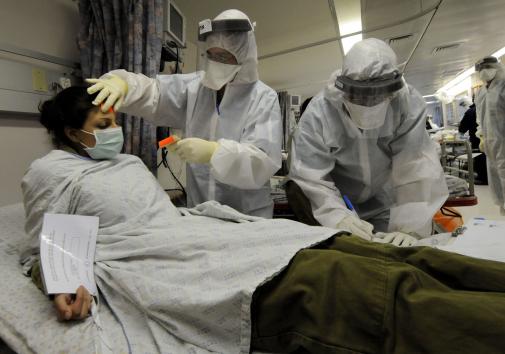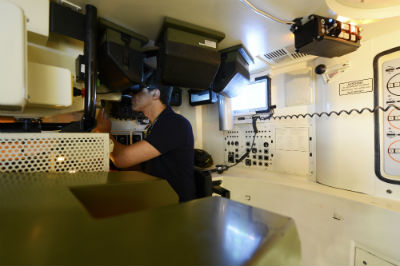Dating back as early as the Peloponnesian War, there is a long history of using biological agents as strategic weapons. According to the United Nations Office at Geneva (UNOG), biological weapons are complex systems that disseminate disease-causing organisms or toxins to harm or kill humans, animals or plants. It is a coveted weapon for terrorist organizations or for individuals who want to inflict harm and instill fear in a population since it can easily be smuggled and dispersed. There are many countries that have formerly had, or continue to possess and research some of the world’s deadliest diseases in secure laboratories. The potential misuse of modern technology applications has increased the risks of bioterrorism.
Understanding the Science
The agents used for the purpose of bioterrorism are not always contagious (anthrax, botulism, Ebola, and Ricin), however there are various biological weapons that are easily spread and transmitted by contact (Tularemia, Plague, Smallpox, and Hemorrhagic Fever Viruses). It is rather inexpensive and easy to obtain the naturally-occurring materials required to carry out acts of bioterrorism.
[captionpix align=”right” theme=”elegant” width=”300″ imgsrc=”http://natoassociation.ca/wp-content/uploads/2013/07/bioterror3.jpg” captiontext=””]
According to the Arms Control Association, there are 24 Biosafety Level 4 (BSL-4) facilities across the world, but that number is expected to rise. In the US, the guidelines set by the Centers for Disease Control and Prevention (CDC) allow BSL-4 labs to work with some of the most dangerous and exotic biological agents that pose a high individual risk of aerosol-transmitted infections. These agents have the ability to cause severe or fatal disease in humans. Currently, there are no known cures developed for any illnesses caused by BSL-4 agents. If a pathogen were to make its way out of a maximum-containment facility, it would be difficult to immediately measure the level of threat because it will likely spread into an epidemic before a successful medical response is available.
Governments claim that it is necessary to possess some of these disease samples for the purpose of biodefence. For instance, the US and Russia have stockpiled smallpox samples with the intent to develop antiviral drugs if there were ever a case of a smallpox outbreak. Even though smallpox has officially been eradicated since 1980, the two states continue to oppose destroying their samples of the disease.
Despite storing these biological agents in maximum-containment labs, there is always the risk of encountering human error. The SARS outbreak of 2002-2003 is an example of a virus that was accidentally released from a BSL-4 laboratory in Taiwan. Current technology would not be able to detect or prevent the removal of a single viral particle or bacterial cell. For these reasons, developing biodefence weapons are incredibly dangerous, especially if they fall into the wrong hands.
Global Biosecurity Measures
The United Nations Office for Disarmament Affairs (UNODA) developed the Biological Weapons Convention (BWC), which entered into force on 26 March 1975. The convention restricts the development, production and stockpiling of biological agents, with the goal to destroy and eradicate biologically hazardous weapons. The BWC depends on a network approach based on coordination with multi-level organizations and governments to address the interconnected nature of biological threats.
In order to strengthen the BWC and global biosecurity standards, it would be prudent to establish a set of minimum performance levels. This could be accomplished by the use of surveillance technologies or the use of armed guards at research facilities. This is chiefly to strengthen countries that have poorly-secured facilities that could be easily accessed by criminals or terrorists. In the US, for instance, the CDC requires strict paperwork from research facilities, however there are no explicit guidelines for physical security measures. The implementation of a minimal performance level would work if it were flexible enough to be tailored to individual facilities, but it would have to be specific enough to ensure a reasonable level of uniformity. This could be achieved through periodic reviews. In doing so, biosecurity standards would constantly be revised and refined according to updated scientific advancements. The reason behind these security measures is that deadly pathogens research will intentionally continue to advance, and this type of research is ahead of a state government’s ability to regulate the science.
One way to encourage international compliance with biosecurity standards would be to integrate state-level biosecurity regulations with international arms control objectives. Another would be to provide incentives instead of trying to establish an international policing system. A suitable incentive could be a research grant for work with dangerous biological agents if a research facility complies with security standards- where the guidelines can be implemented through state legislation. The next recommendation would be to establish a regulatory guide that is bottom-up, instead of top-down. Implementing a system that is bottom-up would allow for greater participation from microbiologists, lab researchers, and science-oriented organizations that have a greater understanding of bioweapons. These measures may not necessarily aid in state-level security compliance, but on an international level, it would help reduce the chances of bioweapons theft and proliferation.
Graham Allison, founding dean of Harvard University’s John F. Kennedy School of Government and leading expert on nuclear proliferation, said that it is amazing that the world has not seen more bioterrorism, given the relative ease of accessing and creating a bioweapon. As long as the genetic code of a virus or disease is known, it can be synthetically recreated. There are endless possibilities to bioweapon variety. Modern technology for scientific applications can be beneficial in many regards, but it can be equally harmful if it is misused. As long as there is awareness of and adherence to a global biosecurity measure, the chances of international bioterrorism can be diminished; otherwise there is the risk of endangering the security of the world. In the words of Dr. Albert Schweitzer, “Man has lost the capacity to foresee and forestall. He will end by destroying the earth.”




